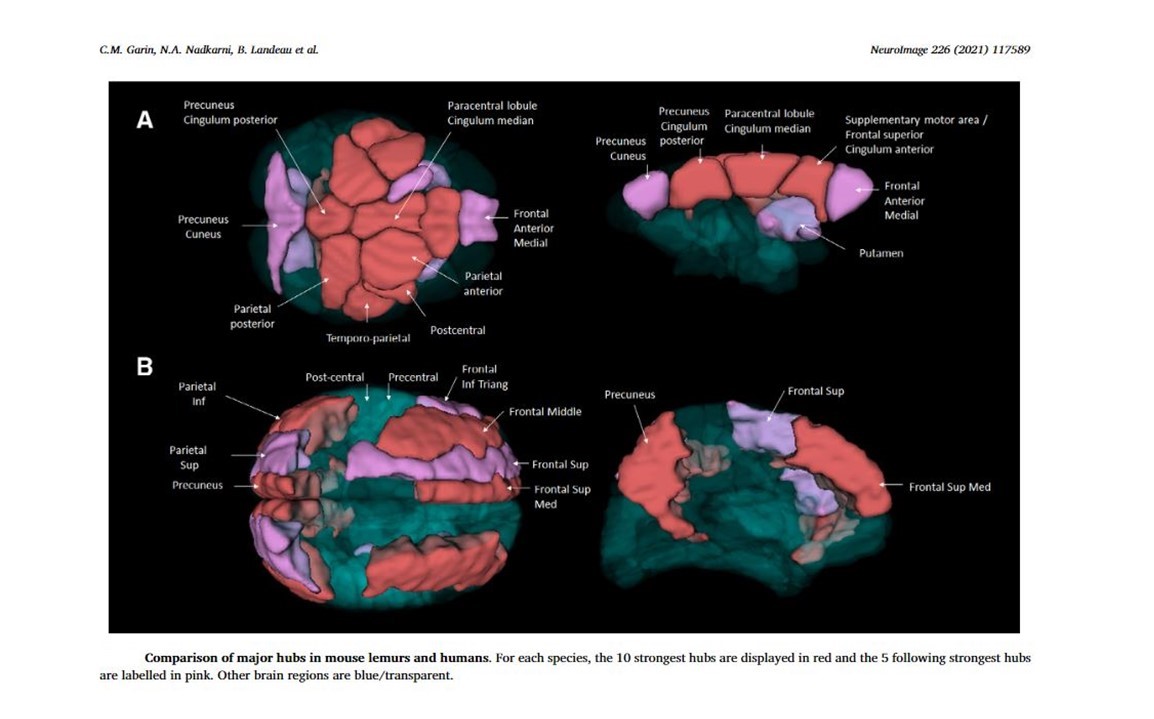In the human brain, to circulate from one region to another, information moves along neuronal networks often associated with particular functions such as environmental surveillance, movement initiation or behavior control, for example. These networks are often altered in numerous neurological disorders. Understanding how the specific architecture of these networks emerged in evolution would contribute to our grasp of the origins of humankind's exceptional cognitive capacities. Among the primates, the mouse lemur (Microcebus murinus) is one of the smallest and most genetically-distant from humans.

In an unprecedented work, a team from MIRCen's Neurodegenerative Diseases Laboratory (CEA-Jacob) has characterized the neuronal network of this tiny primate. For this scientific feat, the team used very high performance 11.7 Tesla nuclear magnetic resonance imaging, a technology that enables the non-invasive study of a brain 800 times smaller than that of humans (1.7 grams vs 1.4 kilograms). The researchers were able to identify the networks responsible for voluntary movement and for visual information processing (somato-motor and visual primary cortical networks). A number of the demonstrated networks may be involved in vigilance following sensory inputs and the attribution of positive or negative valence to stimuli (sensory-limbic and evaluative-limbic networks). The researchers also discussed other high-level networks that may be associated with the organization of complex actions, such as the resolution of attention-demanding problems, or the consideration of visuospatial information or reflexive concerns to refine decision-making (fronto-parietal and fronto-temporal networks).

They noted that the most notable anatomical differences between the lemuroid and human neuronal networks were located mostly in the high-level networks. These latter, often associated with high cognitive function, may have thus undergone specific organizational modifications during human evolution.